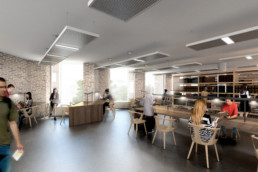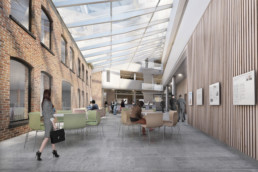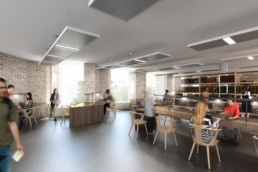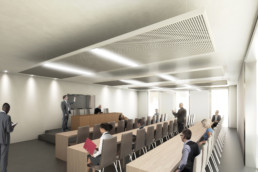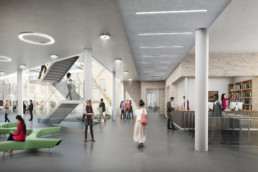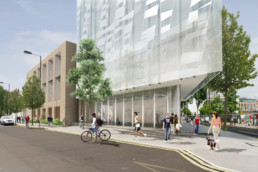After a busy year for City, we round up the biggest stories. An impressive, modern new home for The City Law School begins to take shape, a City academic’s work features in a BBC Two documentary on peregrine falcons, City’s first-ever delegation to Malaysia, a partnership with Google to help combat fake news and much more.
Construction work is underway on a significant new investment in City, University of London’s estate. The Sebastian Street building, due to open its doors in 2020, will provide a new home for The City Law School. The modern seven-storey building will provide 7,200 sq m of world-class educational facilities for City’s students and staff and will allow the School to operate on a single site.
The £63 million Sebastian Street building complex will replace two underused buildings on City’s estate which were demolished earlier this year. Another two buildings (former factories at the corner of Sebastian Street and Goswell Road) will be retained and integrated into the new complex.
"As our first new building in over ten years, the project represents an exciting development that will transform and maximise the potential of the Sebastian Street site. Designed by signature architects WilkinsonEyre, the building will create a prominent marker for the University on Goswell Road and provide an outstanding new home for the consolidated City Law School."
Edward Kevin, Head of Projects, Properties and Facilities at City
The new building will feature a dedicated library, 160-seat lecture theatre, modern study space, staff offices, restaurant and central atrium with a glazed roof. The atrium will link the new building to the existing structures.
City’s President, Professor Sir Paul Curran, said: “Back in 2010, we started to invest in and revitalise our estate and infrastructure. This included new engineering labs, underground lecture theatres and our splendid new front entrance that was opened by Her Royal Highness The Princess Royal last year. But we are not resting on our laurels. We aspire to be a leading global university and this building shows our continuing commitment to investing in City and its future.”
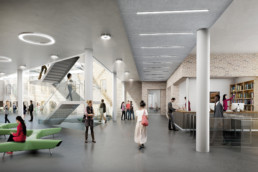
Green credentials of the project include harvesting rainwater, green roofs, ground source heating and cooling, energy-efficient lighting and lifts and solar panels, all contributing to a reduction in City’s carbon emissions.
Prior to construction starting, City collaborated with Museum of London Archaeology for an archaeological dig to ensure the preservation of the rich local history. During the excavation, artefacts dating back to the pre-Bronze Age era were found, in addition to remnants of a Civil War fort, trenches, glazed pottery and tokens from the 1640s.
Elsewhere on campus, City has undertaken a complete refurbishment of the Drysdale Building’s ground floor to provide upgraded PC labs, improved building access and new flexible study spaces for students.
